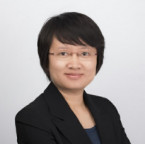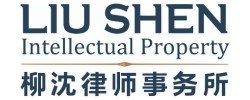Under the doctrine of estoppel (DOE), a patentee may not recapture in patent litigation what was abandoned through either amendment or observation during prosecution or patent invalidation proceedings. Below is a brief introduction to a few guidance cases and the rules of applying the DOE in China set thereby.
What Kind of Amendment or Observation May Trigger the DOE?
The Supreme People’s Court (SPC) gave some opinions on this in a guidance patent infringement case: Aonuo (China) Pharmaceutical Co. v. Hubei Wushi Pharmaceutical Co. In this case, the product alleged of infringement contains calcium gluconate, whereas the corresponding feature in the patent is active calcium. The publication of the patent application records that soluble calcium refers to “calcium gluconate, calcium chloride, calcium lactate, calcium carbonate or active calcium.” During the prosecution, the patentee Aonuo amended “soluble calcium” to “active calcium” in Claim 1 in response to an examination comment that the claim is not supported by the specification. In the judgment, the SPC stated that the technical solution including “calcium gluconate” is abandoned through the amendment made by the patentee, and thus should not be included in the protection scope again.
In view of the SPC’s opinions, the Beijing Municipal Higher People’s Court has specified the applicability of the DOE in the Patent Infringement Determination Guidelines, and in brief, an amendment/observation that may trigger the DOE shall narrow down the protection scope of a claim for the purpose of overcoming substantive defects such as lack of novelty or inventive step, lack of indispensable technical features, the claim being not supported by the specification, or disclosure of the specification being insufficient, etc. The majority of the courts in China adopt a similar rule.
To Which Extent May the Application of DOE Affect the Protection Scope?
The DOE can be deemed as a limitation of the doctrine of equivalents. Under the DOE, only when a technical solution is abandoned to satisfy substantive requirements for a patent, it cannot be re-incorporated into the protection scope through the doctrine of equivalents. In Aonuo v. Wushi, the SPC didn’t provide comments with regard to whether the DOE applies to other equivalents of “active calcium” that are not listed in the specification. In other words, only the calcium gluconate is explicitly excluded, and other equivalents that are not listed in the specification are not.
In another guidance patent infringement case [Zhongyu Electronics (Shanghai) Co. v. Shanghai Nine Eagle Electronic Technology Co.], regarding the determination of abandoned protection scope, the SPC is of the opinion that the DOE is usually applied to situations where the patentee abandons a technical solution by himself through either amendments or observations; where an independent claim is invalidated and patent is maintained valid based on its dependent claim and the patentee himself has not abandoned any technical solution, it is not a sufficient condition to apply the DOE to a dependent claim; if an additional feature in the dependent claim is not generalized in the independent claim, then because the additional technical feature have no original reference, technical solutions other than the additional technical feature shall not be inferred as being totally abandoned.
In Zhongyu v. Nine Eagle, the independent Claim 1 and its dependent Claim 2 have been declared invalid, and the patent is maintained valid based on Claim 3 that depends on Claim 2 and defines a feature of “a silver film” as a guide strip. This feature in Claim 3 is not mentioned in Claims 1 or 2, and the patentee Zhongyu has not amended the claims or the specification or made observations to abandon technical solutions with conductive materials other than the “silver film” as a guide strip in the prosecution and invalidation proceedings. Therefore, it should not be deemed that the additional technical feature “silver film” in Claim 3 no longer applies to the doctrine of equivalents based on that Claims 1 and 2 have been declared invalid.
Who Can Advocate Application
Usually, the DOE should be applied when the alleged infringer makes a request, but it does not preclude the courts from taking the initiative to apply. In yet another patent infringement case [Qiheng SHEN v. Shanghai Shengmao Transport Facilities Engineering Co.], the SPC points out that the DOE is a limitation to the doctrine of equivalents; in order to maintain balance of interests between the patentee and the alleged infringer as well as the public, the courts should not be restricted from taking the initiative to apply the DOE. Therefore, when determining whether equivalent infringement is established, even if the alleged infringer fails to advocate applying of the DOE, the courts may apply the DOE based on facts that have been identified to make necessary limitations to scope of the equivalents, thereby reasonably determine the patent protection scope.










